Árbol de Cacao a Pasta de Cacao

La Ganadería Animal - un Factor Negativo en la Ecuación de la Pandemia
29/09/2020
La Importancia de la Certificación de Seguridad Alimentaria
29/04/2021El Cacao de origen único de Mareai proviene de los granos de Cacao Criollo premium que crecen en la Amazonas de Perú, un antiguo entorno del árbol sagrado de Theobroma Cacao.
Las civilizaciones Inca, Quechua, Olmeca y Maya que alguna vez florecieron en esta parte del mundo consumían cacao como una bebida sagrada. Esto sucedió hace más de 3000 años.
Esta parte del mundo produce excepcionales granos de cacao preferidos por los chocolateros más famosos del mundo. Los granos de criollo se muelen para hacer una pasta utilizada para preparar una bebida usada en Ceremonias de Cacao en Australia y Nueva Zelanda.
Este artículo describe cómo se hace la pasta de cacao, así como el por qué es considerada cacao de grado ceremonial.
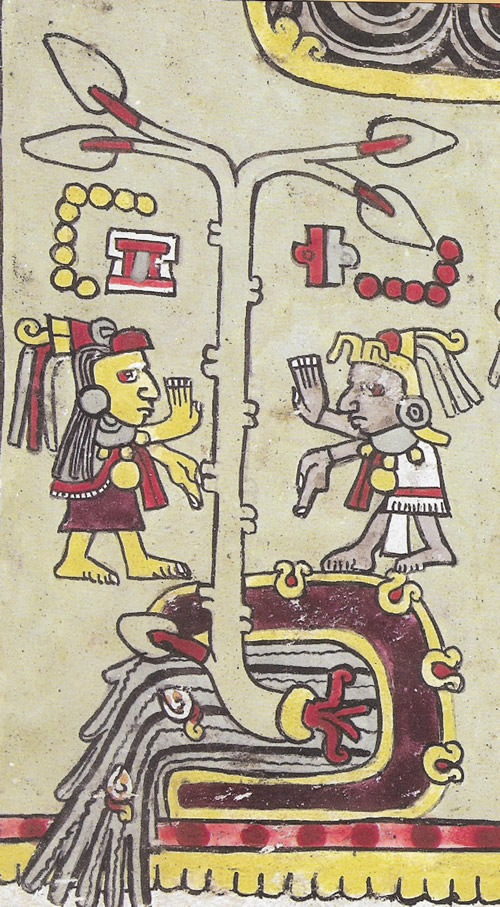
El árbol de cacao es parte de un maravilloso ecosistema. Requiere la sombra de grandes árboles nativos y, a cambio, mantiene el suelo húmedo y rico en nutrientes. Es un equilibrio perfecto entre la cantidad de sol que los grandes árboles ofrecen (sombra) y la contribución de los árboles pequeños de cacao para mantener un suelo saludable.
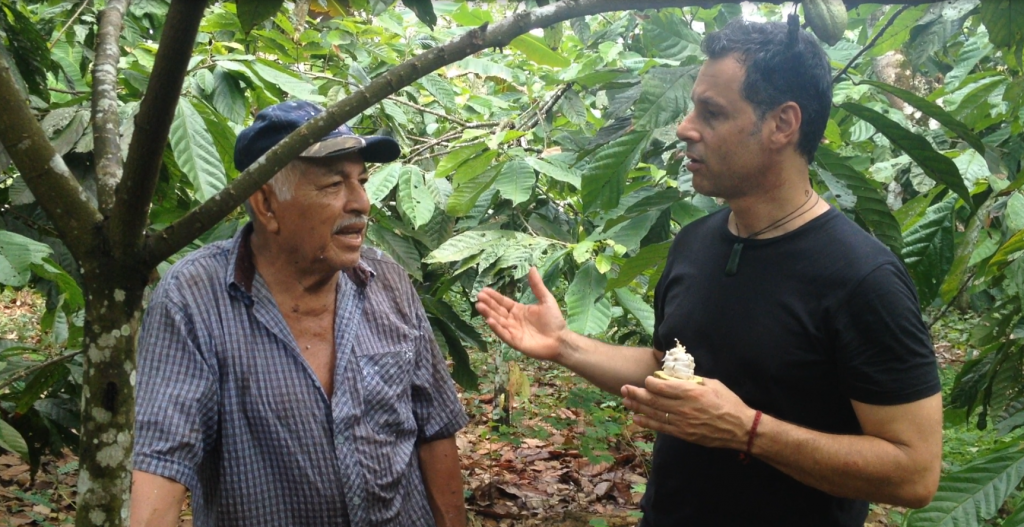
Las condiciones correctas de sombra y luz solar requieren una poda cuidadosa de los árboles. Demasiado sol secará el suelo y muy poca luz solar promoverá el crecimiento de hongos y parásitos. El secreto para un buen cacao es el equilibrio correcto de nutrientes en el suelo y el balance adecuado de luz solar. ¡Por supuesto, también mucho amor y cuidado por parte de los cultivadores!
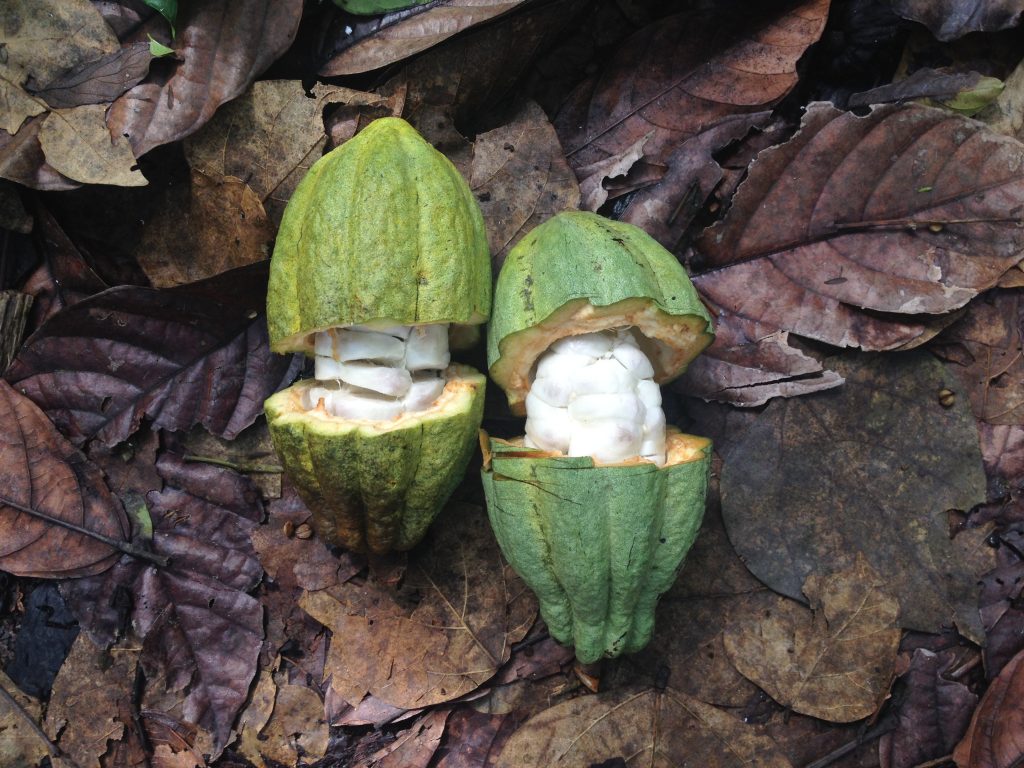
Los granos de cacao son extraídos del interior de la fruto de cacao (mazorca), los cuales contienen tanto los granos (semillas) y una pulpa dulce y blanca.
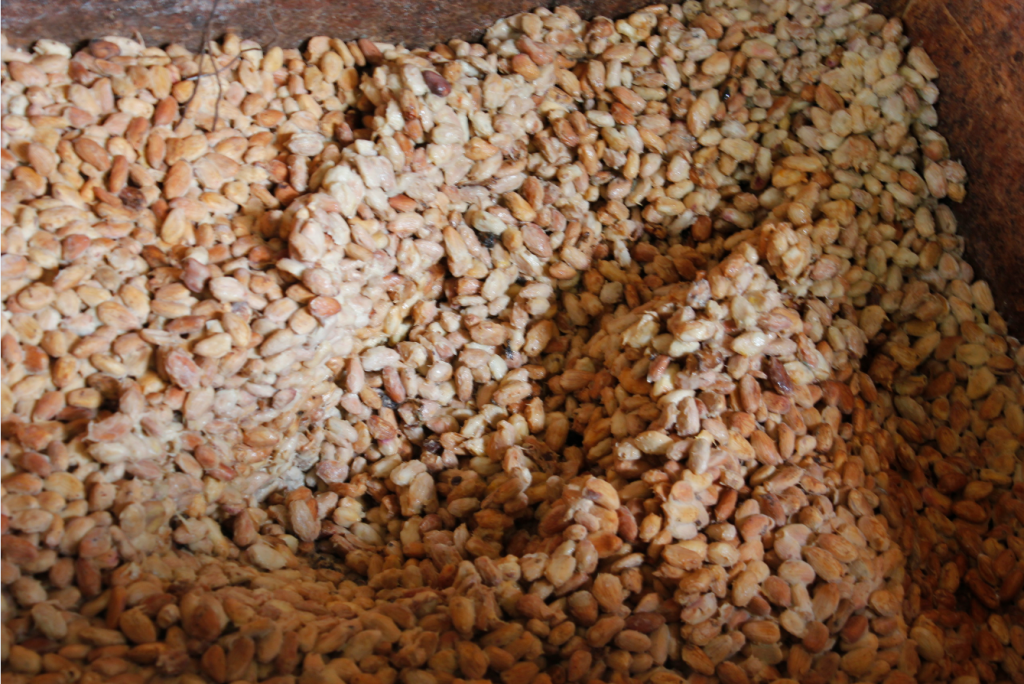
Las semillas (granos) junto con la pulpa dulce y blanca se dejen a fermentar un contenedores de madera por 3-5 días.
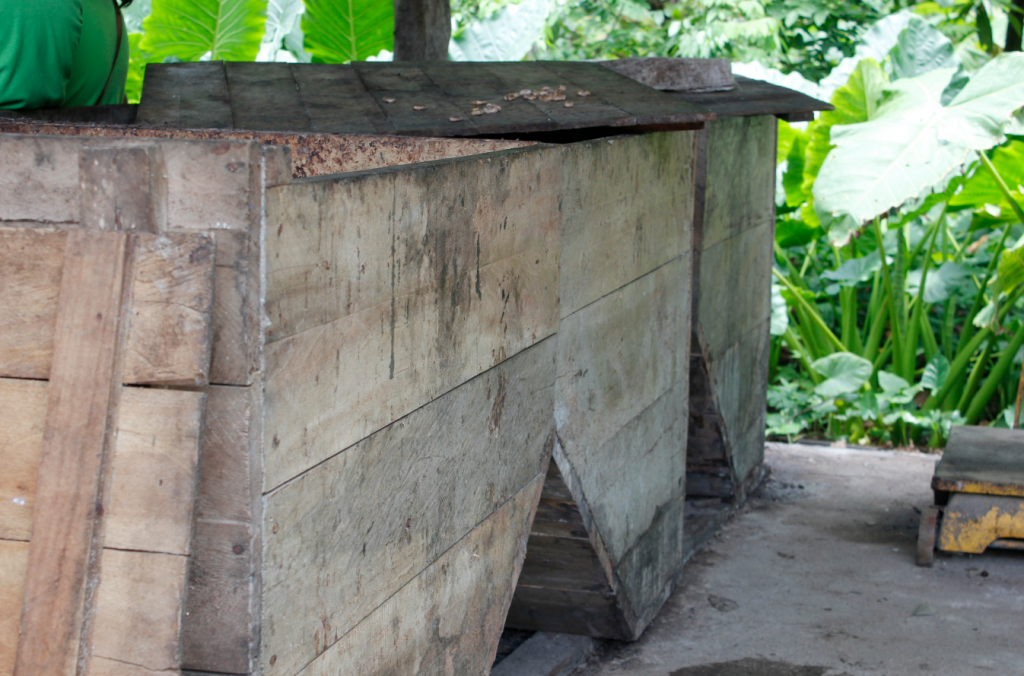
Después de la fermentación, los granos son secados al sol. Cuando los granos están secos y han alcanzado un estado perfecto de sabor, están listos para ser pelados.
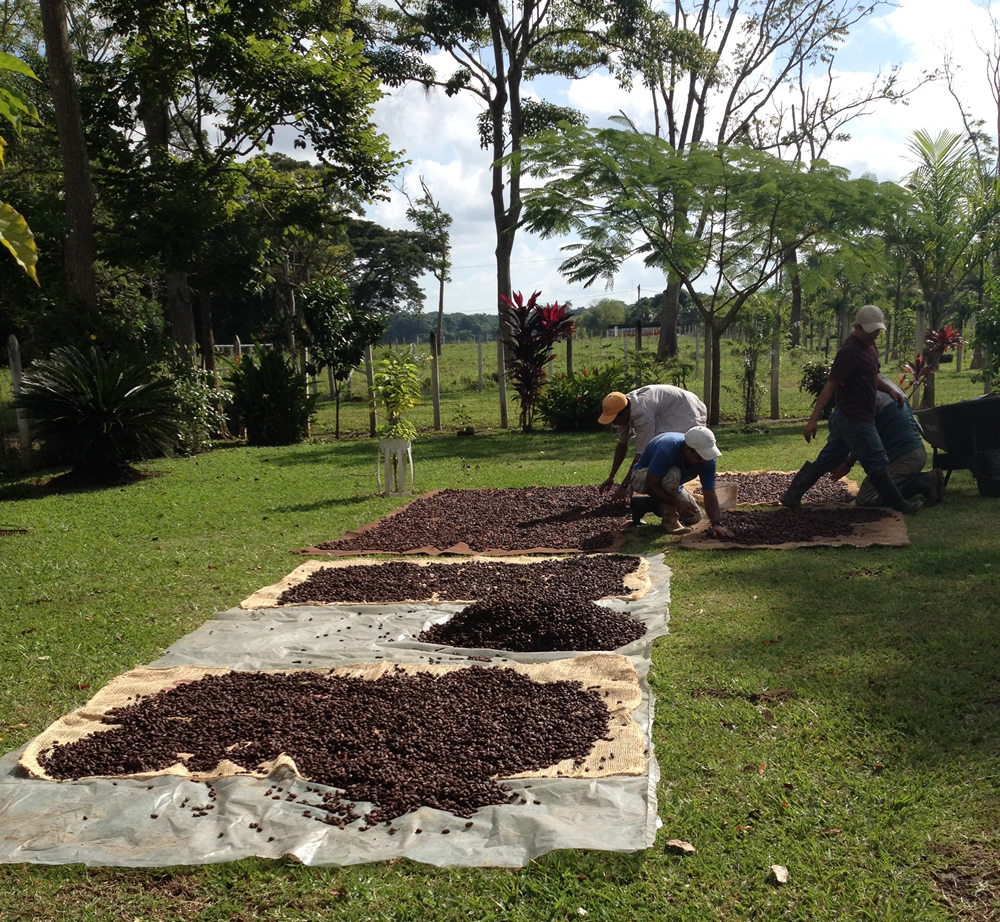
Maretai mantiene una estrecha relación con los cultivadores en las regiones amazónicas de Jaén, Juanjui, Tarapoto, Ayacucho, Tingo María, Satipo y Quillabamba en Perú. Nuestro programa de desarrollo social incluye donaciones y cursos de agricultura sostenible que ayudan a mejorar las condiciones de vida de los agricultores.
El mes pasado, Maretai Organics y nuestros amigos de Cacao Collective en Australia Occidental enviaron una donación a Perú que se utilizó para comprar un conjunto de herramientas para una de las familias en Satipo, justo a tiempo para la temporada de poda. ¡Gracias Mitchell!
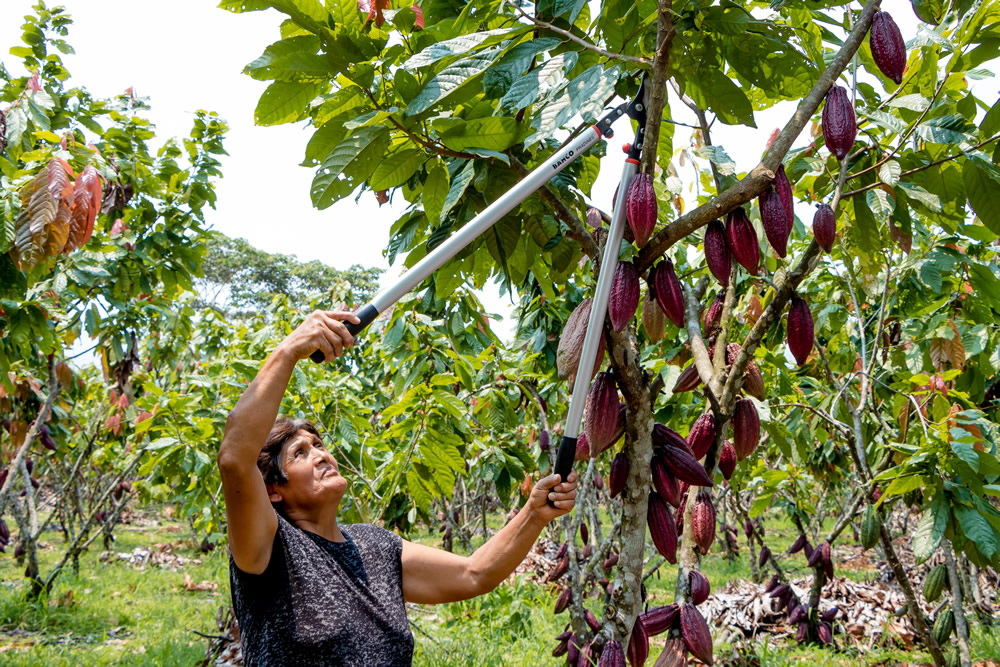
De esta forma, apoyamos en el trabajo de los agricultores y podemos devolver algo a la comunidad que cultiva nuestro maravilloso cacao.
De granos a Nibs
Una vez secados al sol, los granos se seleccionan y se limpian de ramas, piedras y cualquier otra posible impureza, pasando luego por un deshidratador. Luego se pasan a una etapa donde una fuerte corriente de aire caliente sopla las cáscaras y recupera los granos de cacao fragmentados, que ahora se llaman "nibs".
Los nibs de cacao son fragmentos del grano de cacao sin cáscara, y contienen todos los nutrientes y propiedades benéficas de este superalimento ancestral.
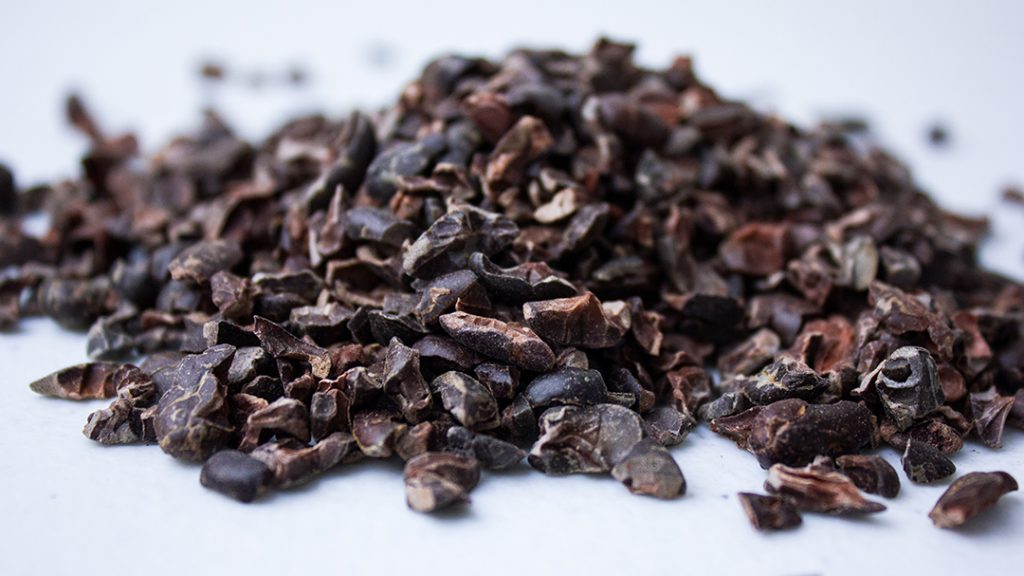
La segunda etapa en el proceso de producción es la molienda de los nibs de cacao para producir una pasta espesa. Los nibs contienen aproximadamente un 50% de grasa natural, por lo que al ser molidos, se obtiene una pasta espesa. Después de que se enfría, la pasta de Cacao se solidifica y tiene la apariencia y el sabor de un chocolate oscuro y duro.
Puede intentar hacer la pasta de cacao en casa al moler los nibs de cacao con el molino de café. Así vería el proceso de primera mano. No es muy eficiente pero es una manera muy ilustrativa de experimentar y entender cómo se obtiene la pasta de cacao.
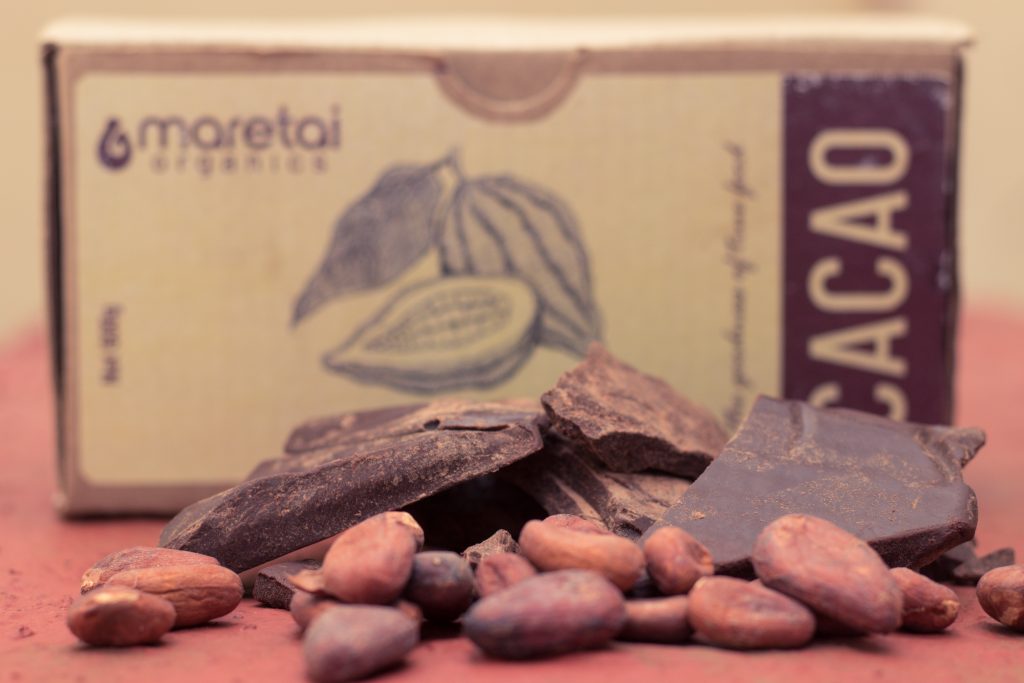
La composición de la pasta de cacao es exactamente la misma que la del grano de cacao. Aproximadamente la mitad es grasa de cacao (manteca de cacao) y la otra mitad son sólidos de cacao. Este es el chocolate en su forma más pura. Civilizaciones antiguas hervían el agua y agregaban pasta de cacao para crear la bebida sagrada xocolatl añadiendo especies que incluían pimienta, chile y vainilla.
Tenga en cuenta que también puede crear una bebida de chocolate usando cacao en polvo, aunque el sabor no sería el mismo porque le faltaría la parte de manteca de cacao. Siempre puede crear diferentes combinaciones de cacao en polvo y manteca de cacao para obtener diferentes resultados. La bebida tradicional de cacao se hacía solo con los granos de cacao molidos, esto significa usar la pasta de cacao (aproximadamente 50% manteca de cacao + 50% cacao en polvo).
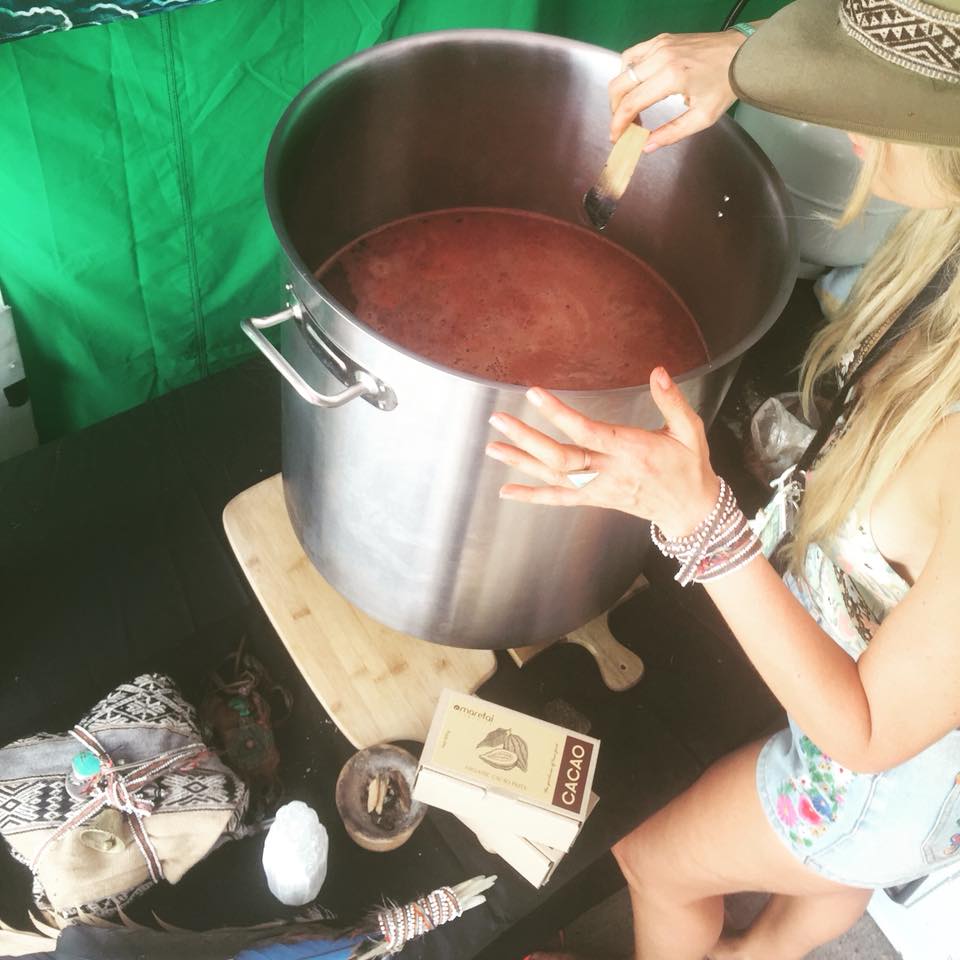
En los últimos años, las ceremonias de cacao se han vuelto comunes en Australia y en otros países occidentales. Las ceremonias de cacao modernas agregan elementos de los rituales Mesoamericanos así como meditaciones de sanación chamánicas.
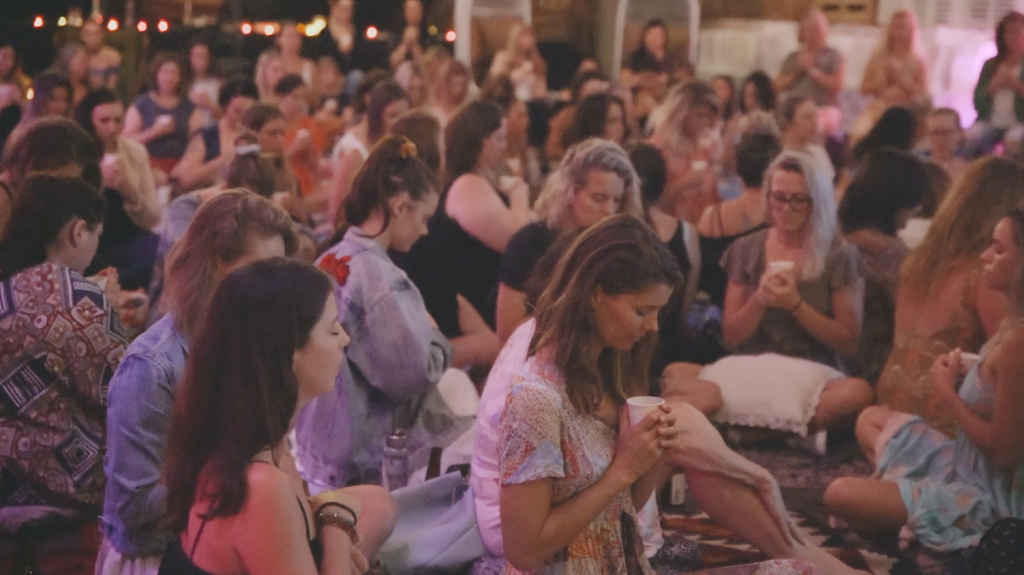
El cacao de grado ceremonial debe provenir de la región Mesoamericana del mundo y debe de ser cultivado de manera sostenible y de condiciones justas para el ambiente y los agricultores, quienes cultivan el cacao de la misma forma en la que se hacía hace miles de años.
Si encontró este artículo útil, por favor, compártalo y suscríbase a nuestro blog. ¡Gracias!

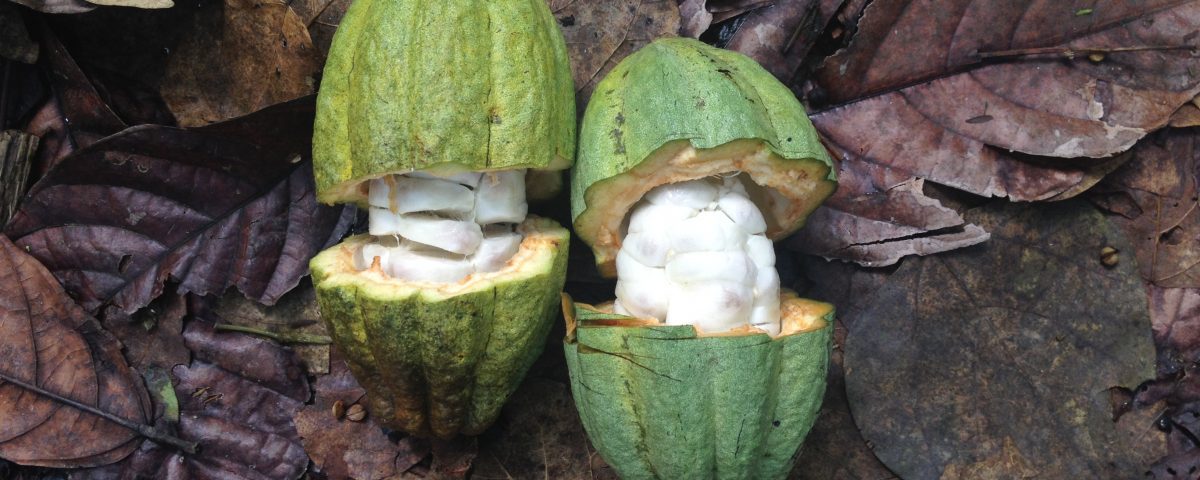

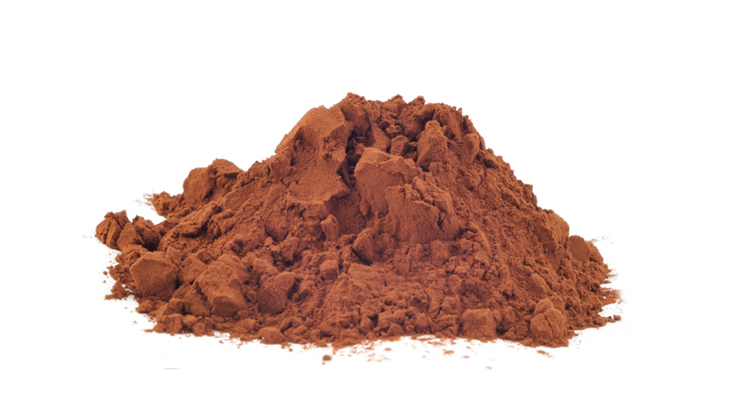
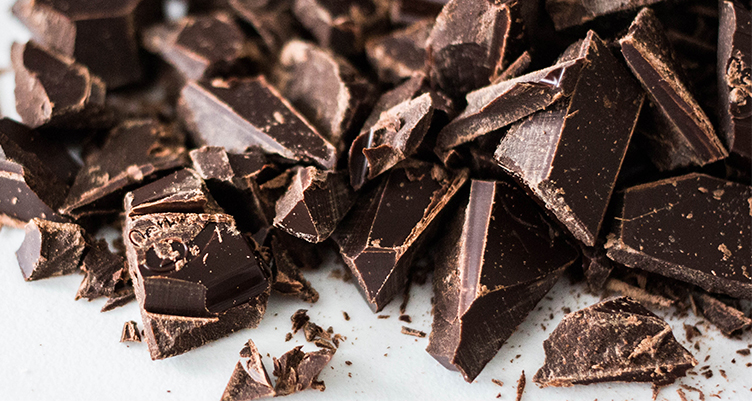
1 Comentarios
Wonderful blog about the amazing Cacao! Thank you